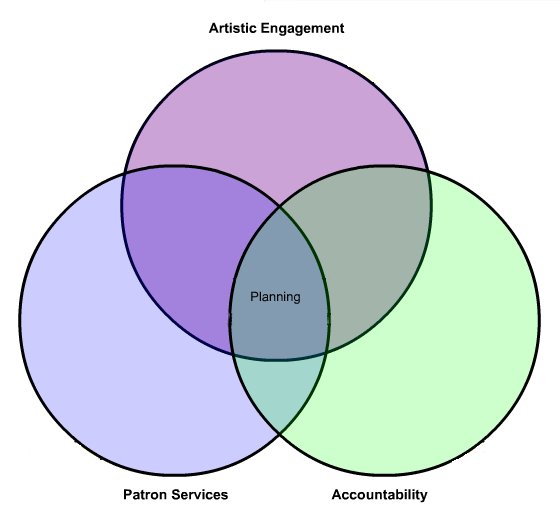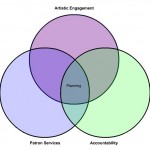The Memphis Model & the Director of Innovations
A few years back, the Memphis Symphony was suffering a misunderstanding about their operational structure that became known as “the Memphis model.” Musicians around the country were under the impression that Memphis musicians were working in the office as part of their musician contracts — a “service conversion” situation. When I went to investigate, I found not only that this was not true but also that the operational structure they’d put in place was indeed revolutionary, and worthy of being called “the Memphis model.”
I wrote a spotlight on the Memphis Symphony in March 2011 that explains in detail the innovative community engagement programs the MSO has developed, with major input from the players. In writing the spotlight, I interviewed Michael Barar, MSO Violist and their ROPA representative; Gaylon Patterson, MSO Principal 2nd Violin; Susanna Perry Gilmore, Concertmaster; Lisa Dixon, former Chief Operating Officer and now Executive Director of the Portland (ME) Symphony; and Ryan Fleur, MSO President and CEO, about their array of innovative programs, such as Leading from Every Chair® and the Opus One concert series.
But my favorite interview was with Rhonda Causie, the MSO grant writer. Ryan Fleur has come up with a unique structure for the MSO staff, with everyone assigned to one of three departments: Artistic Engagement (Artistic Planning, Operations, Education), which involves any way in which MSO artists are deployed, Patron Engagement (Development & Marketing), which involves anything to do with patrons, and Accountablity (Finance), which measures what’s happening in the other two areas. At the intersection of these three areas is Planning, and that’s exactly where Rhonda sits in this organizational plan.
Rhonda’s title is Director of Grants and Innovations, and unlike at most non-profits, she doesn’t work in the Development Department but rather reports directly to the CEO. Whenever a musician gets an idea for a new project, such as when Frank Schaffer, timpanist, wanted to explore leading drum circles as part of the MSO’s community engagement initiatives, the player brings the idea to Rhonda. She puts together a logic model that analyzes whether the project is viable in terms of getting the needed funding, finding organizational resources, etc. Basically, if Rhonda gives a project a thumbs up, it will most likely be given a green light by management, and if she gives it a thumbs down, she can give the musician specific reasons as to why it probably won’t work for the MSO to undertake the project.
It’s a most interesting organizational model — one I wish more orchestras would adopt. So for this Editor’s Choice, I bring your attention to the central role of the grant writer (and director of innovations!) at the Memphis Symphony.



[…] Sympho0ny has put into effect some real innovations in the past, as my colleague Ann Drinan has reported for Polyphonic. Other orchestras have managed significant change without provoking an internal […]